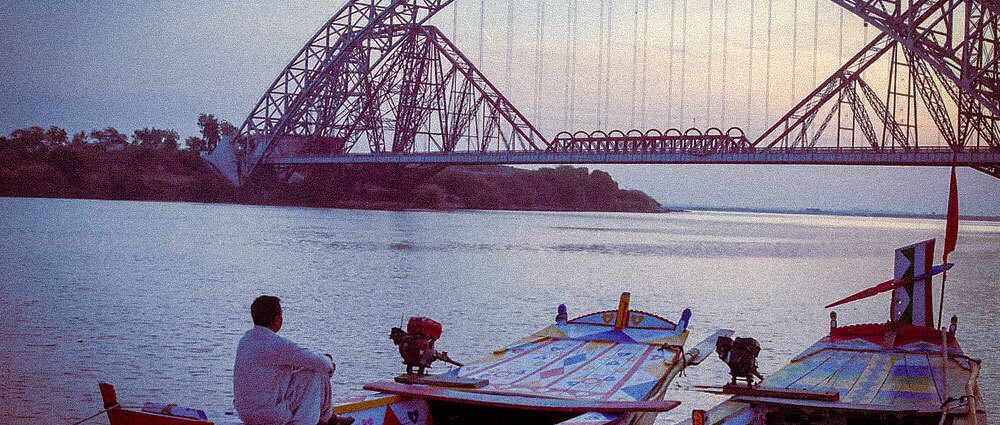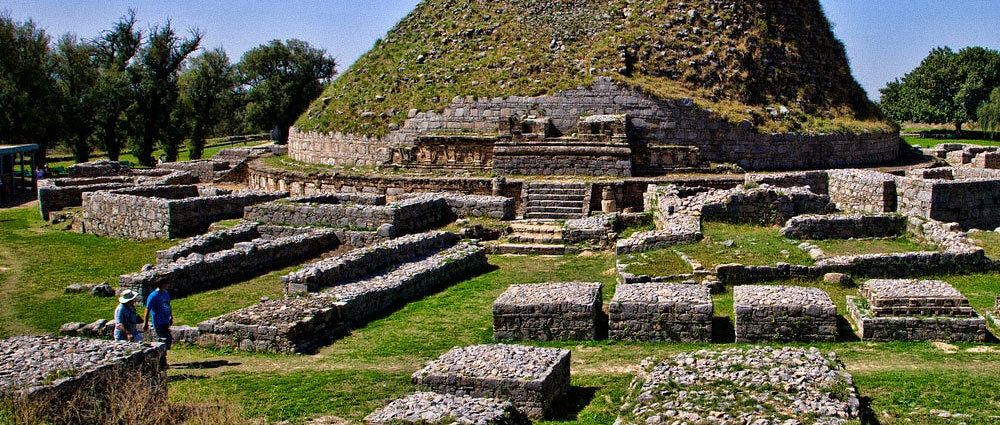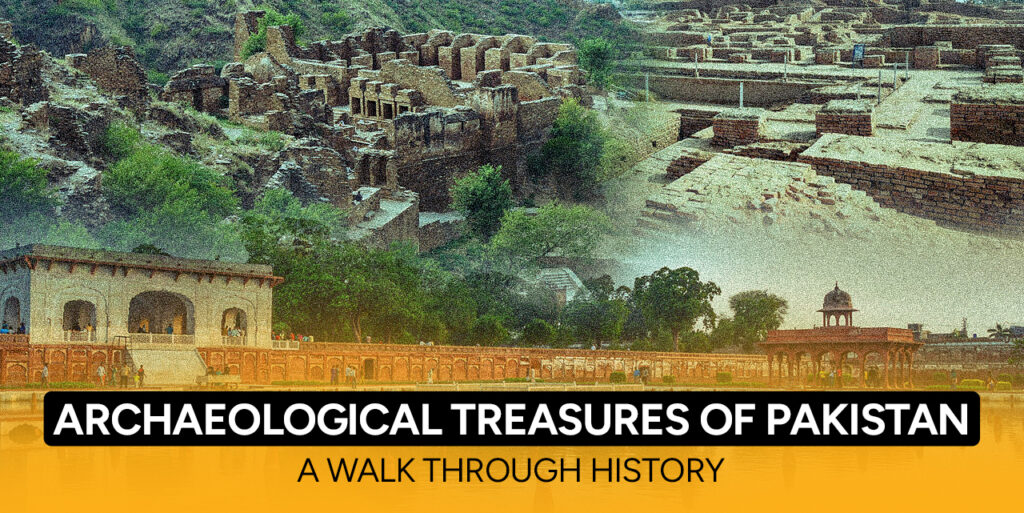Pakistan, a land of ancient civilizations and rich cultural legacies, is home to some of the most breathtaking and awe-inspiring historical sites in the world. From centuries-old Buddhist monasteries to marvels of the Mughal empire, the tell stories that span thousands of years.
If you’ve ever wondered what archaeological treasures were found in Pakistan or what is the oldest archaeological site in Pakistan, then buckle up, we’re about to take you on a fascinating journey through time.
1. Mohenjo-Daro: The Indus Valley's Urban Wonder
We first examine the famous archaeological site in Pakistan: Mohenjo-Daro, meaning, “Mound of the Dead.” Its antiquity spans more than 4,500 years; Mohenjo-Daro was one of the major cities of the Indus Valley Civilization, thus making it probably the oldest archaeological site in Pakistan. Discovered in the 1920s, it was designated as a UNESCO World Heritage site in 1980, making it one of the greatest archaeological discoveries in Pakistan.
But perhaps the most iconic archaeological discovery in Pakistan is the statue of the Dancing Girl, found in Mohenjo-Daro. This 4,000-year-old bronze figurine stands just 10.5 cm tall, yet speaks volumes about the artistic expression and cultural sophistication of the time. Her confident pose and intricate bangles make her the face of historical remains in Pakistan, embodying both mystery and mastery.
To know how this beautiful statue ended up in India, instead of Pakistan, watch this fascinating documentary called Dancing Girl.
2. Lansdowne Bridge: The Engineering Marvel of the 19th Century
Moving from ancient to colonial times, the Lansdowne Bridge in Sukkur, Sindh, is a marvel of 19th-century engineering. Completed in 1889, this bridge once held the title of the largest cantilever bridge in the world. Though not as ancient as other sites, it’s a vital part of Pakistan’s architectural heritage. Spanning the mighty Indus River, the bridge connects Sukkur and Rohri and reflects the fusion of utility and design, an essential stop for lovers of history and travel alike.
To learn about the history of how the British built this bridge to ward off the Russians and facilitate trade between cities, watch this Documentary by Rava called The Lansdowne Bridge.

3. Takht-i-Bahi & Sahr-i-Bahlol: Buddhist Memories
The next is the Buddhist ruins of Takht-i-Bahi – another UNESCO wonder and one of the primary contenders when one comes across the name of archaeological treasures Pakistan has. Incidents like this take place on a high hill near Mardan, Khyber Pakhtunkhwa. Monasteries like this were founded in the first century A.D. and remained in operation for a stretch of several hundred years.
“Throne of the Spring” is the meaning of Takht-i-Bahi, and one will understand this when standing on its stone paths in a surrounding embrace of greenery and ancient silence. There is Sahr-i-Bahlol close to it, which happens to be the remnant of a fortified city that used to support the monastery in full glory. Together, they reveal snippets of Pakistan’s Buddhist past, thus showing how this region served as a crossroad and interplay of cultures and beliefs.
4. Lahore Fort & Shalamar Gardens: A Mughal Momento
However, without Lahore Fort and Shalimar Gardens, there is not an exhaustive list of archaeological treasures of Pakistan. These sites became part of the World Heritage Site list in 1981, and they truly celebrate the artistic architectural excellence achieved by the Mughal Empire.
Lahore Fort, otherwise known as the Shahi Qila, is a sprawling complex of palaces, halls, and mosques with roots going back to the 11th century. Right next to it, the Shalimar Gardens (built in 1641 by Emperor Shah Jahan) offer a masterpiece of landscape design, flowing with water channels, marble fountains, and symmetrical elegance, transporting you to the Mughal royalty itself.
5. Makli Necropolis
Just outside Thatta, Sindh, lies Makli, one of the largest necropolises in the world. Recognized as a UNESCO World Heritage Site in 1981, Makli Hill is the final resting place for over half a million souls, kings, queens, saints, and scholars.
The tombs and mausoleums are carved in sandstone and glazed tiles, blending Islamic, Persian, Hindu, and Gujarati architecture. Walking through Makli is like walking through a stone-bound anthology of history; each grave has a story, and every structure whispers secrets of an era long forgotten.
6. Taxila
Finally, we arrive at Taxila, another gem on the list of famous archaeological sites in Pakistan. Situated near Islamabad, Taxila was once a hub of education, trade, and religion, home to one of the world’s earliest universities. This city saw influences from Persian, Greek, Central Asian, and Indian civilizations.
Here you’ll find the ruins of monasteries, stupas, temples, and ancient streets, clear signs of a thriving, multicultural society that once flourished centuries ago. It’s no wonder UNESCO added Taxila to its World Heritage list in 1980.

Why These Sites Matter
These places aren’t just piles of stone or monuments of the past, they’re living chapters of our shared history. The face of historical remains in Pakistan is diverse, rich, and deeply rooted in the evolution of civilizations. Whether it’s the ancient artistry of the Dancing Girl, the majestic Lahore Fort, or the silent grandeur of Makli, these sites answer the question: What is the oldest archaeological site in Pakistan? What archaeological treasures have been found in Pakistan? With awe and reverence.
Final Thoughts
Exploring the archaeological treasures of Pakistan is like leafing through the pages of an epic novel, one filled with empires, artistry, faith, and timeless stories. As more archaeological discoveries in Pakistan come to light, we are reminded of how much history this land holds beneath its soil.
So whether you’re a curious traveler, a history buff, or someone simply wondering about the roots of human civilization, Pakistan’s archaeological heritage awaits, with its secrets, its wonders, and its soul.
Explore the unseen and forgotten stories of Pakistan with Rava Documentary Films and uncover hidden gems and past tales that will leave you fascinated.

